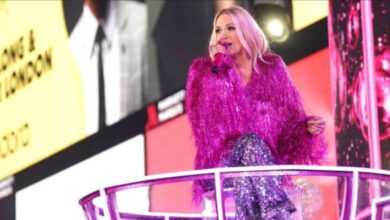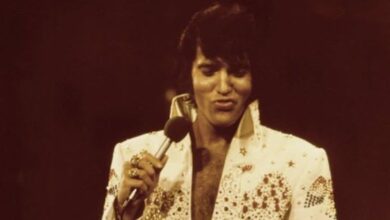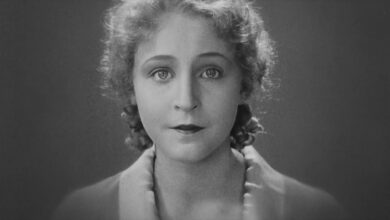Del Shannon’s “Runaway” Redefines Heartache and Hits the Top in 1961
When “Runaway” exploded onto the airwaves in early 1961, it wasn’t just another teen heartbreak anthem—it was a sonic revolution. Performed by Del Shannon and co-written with keyboardist Max Crook, the song rocketed to No. 1 on the Billboard Hot 100 and stayed there for four weeks. Its eerie, futuristic keyboard solo and falsetto-driven anguish marked a turning point in early rock ‘n’ roll, where production innovation began to rival the strength of melody and lyrics. Few debut singles have ever captured the cultural moment with such electricity or left a more enduring imprint.
Del Shannon, born Charles Westover in Grand Rapids, Michigan, had a background far removed from the glitz of Hollywood or the beat of Memphis. Raised in a working-class family, he served in the Army before working as a carpet salesman and playing music on the side. His voice—piercing, plaintive, and full of emotional urgency—set him apart from the crooners and rockabilly stars of the day. Adopting the stage name Del Shannon, he brought with him a blend of Midwestern grit and romantic yearning that would become his signature.
The genesis of “Runaway” began during Shannon’s nightclub sets, where he teamed up with Max Crook, an eccentric keyboardist who had invented his own electronic instrument called the Musitron. Crook’s modified clavioline had a ghostly, space-age tone, and the duo crafted a chord progression that felt unconventional, even disorienting. The song’s lyrics were steeped in desperation and confusion, mirroring the emotional chaos of lost love. Shannon’s idea to soar into a falsetto on the chorus added an extra dimension of drama, capturing the ache of someone spiraling in real time.
Recorded at Bell Sound Studios in New York, the production was as groundbreaking as the songwriting. Harry Balk and Irving Micahnik produced the track, but it was Max Crook’s Musitron solo that turned heads. No one had ever heard anything quite like it—its alien sound sliced through the standard guitar-and-drum fare of the day, giving “Runaway” an otherworldly, unforgettable edge. Shannon’s vocals were double-tracked to increase intensity, and the final mix had a haunting clarity that was rare for the era.
Upon release, “Runaway” was an instant smash. It climbed to the top of the Billboard charts in April 1961 and quickly found international success, reaching No. 1 in the UK and charting across Europe. The song’s unconventional sound didn’t deter listeners; if anything, it fascinated them. By the summer, Shannon had gone from a regional unknown to an international star. “Runaway” would go on to sell millions of copies and earn a permanent spot in the early rock canon.
Culturally, the track hit a nerve with its sense of dislocation and despair. The early ’60s were an era of transition—between the buttoned-down ’50s and the radicalism to come—and “Runaway” seemed to straddle both worlds. It expressed the unspoken fear and longing of a generation that felt emotions swelling but didn’t yet have the social permission to articulate them. Shannon gave voice to that internal struggle, marrying it with a sound that felt like the future.
For Del Shannon, the song changed everything. It catapulted him into the spotlight, earning him bookings on “American Bandstand” and international tours. Though he would go on to score other hits, including “Hats Off to Larry” and “Keep Searchin’ (We’ll Follow the Sun),” nothing would quite match the impact of “Runaway.” It became the defining song of his career, and also a creative standard he struggled to meet again. But Shannon embraced the challenge, continuing to experiment with sounds and lyrical themes throughout his life.
“Runaway” also had a deep influence on other artists and the genre itself. Its use of falsetto and electronic keyboard as focal points helped broaden the palette of rock and pop production. The song was a forerunner to the synth-driven music of the ’70s and ’80s, while its emotional openness helped pave the way for singer-songwriters of the ’70s like Jackson Browne and Elton John. Its legacy is woven into the fabric of modern pop.
The song has been covered and reinterpreted countless times. Elvis Presley reportedly admired Shannon’s voice, and Bonnie Raitt offered a bluesy rendition in the ’70s. Most notably, Shannon re-recorded “Runaway” in 1967 with updated lyrics and again in the 1980s for the TV series “Crime Story,” proving the track’s remarkable adaptability. These versions maintained the song’s essence while introducing it to new audiences.
In Shannon’s personal life, “Runaway” cast both light and shadow. While it brought him fame, it also placed immense pressure on his artistic identity. Known for his sensitivity and perfectionism, Shannon battled depression and alcoholism throughout his life. The song that made him also came to define him—an emotional high point that he could never quite leave behind. Still, he remained a respected figure in music, admired for his sincerity and innovation.
Even decades after its release, “Runaway” continues to resonate. Its inclusion in numerous films, TV shows, and retrospectives keeps it in the public ear. Its unforgettable opening riff and anguished lyrics still connect with listeners of all ages. In an age where pop music often values polish over passion, Shannon’s rawness feels refreshing and vital.
Musically, the song helped usher in new production possibilities. The Musitron solo is now regarded as a landmark moment in rock instrumentation, and the song’s structure—with its sudden shifts and dynamic contrasts—influenced how later producers approached emotional storytelling through music. “Runaway” proved that risk-taking could be both artistically satisfying and commercially successful.
Del Shannon was posthumously inducted into the Rock and Roll Hall of Fame in 1999, with “Runaway” often cited as the work that sealed his legacy. His influence can be heard in artists ranging from Tom Petty to A-ha, each borrowing a bit of that haunted urgency he captured so well. Shannon may have struggled to escape the long shadow of “Runaway,” but the song’s brilliance remains undeniable.
In the end, “Runaway” is more than just a hit single—it’s a portrait of youthful despair, a production milestone, and a testament to pop music’s ability to express what words alone cannot. It immortalized Del Shannon as a pioneer of sound and emotion, and it continues to haunt, comfort, and captivate new generations. It remains a singular moment in music history, born from heartbreak but destined for eternity.



